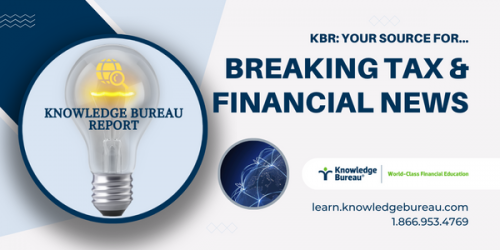Sage Investing: RRSP’s TFSA’s OR RPP’s?

Geoff Currier and Evelyn Jacks
With the March 3 RRSP deadline around the corner, it’s time for an important primer on the three prime registered savings plans for Canadians are Registered Retirement Savings Plans (RRSP’s) Tax Free Savings Accounts (TFSA’s) and Registered Pension Plans (RPP’s). Why?
Because from a financial peace of mind point of view, they may be more valuable now in a time of great economic uncertainty. Which do Canadians prefer? Are their choices correct? How can tax and financial advisors help?
The Rise of the TFSA: Since the creation of the (TFSA) in 2009, Canadians, especially those at the lower end of the income spectrum, have favoured TFSA’s over the traditional RRSP’s. The RRSP was first introduced in 1957 to give Canadians an option of reducing their taxes while saving for their retirement.
TFSA’s have seen a rise in participation rates so that by 2020, 39.4% of Canadians families were participating. That figure is nearly double what it was in 2009.
While TFSA’s have increased in popularity, the opposite can be said for RRSP’s. According to Statistics Canada in 2022, 21.7% of Canadians contributed to an RRSP, which is down .5% from the previous year. The dollar amount also decreased to just over $54.2 billion, which is a reduction of 3.4% from 2021.Given that TFSA’s were introduced 52 years following the introduction of RRSP’s, it stands to reason that the increase in contribution to the former outstripped the latter in percentage terms.
You will need to be able to advise your clients which of these options will suit them best as they plan for their post working lives, as clearly the tax free accumulations in the TFSA are most attractive for retirement planning. However, by giving up the RRSP deduction in the present there are three misses that can affect the time value of money:
1. For high income earners, more taxes are paid at higher tax rates when the RRSP deduction is missed
2. For middle and low earners, clawbacks of refundable and non-refundable tax credits rise.
3. For all taxpayers, tax deferred income growth on amounts over $7000 – the current TFSA contribution limit – are missed. So are the options to use the Lifelong Learning Plan and Home Buyers Plan, features under the RRSP umbrella.
The RPP Question: Participation in the employer-sponsored Registered Pension Plans (RPP), meanwhile increased slightly from 25.8% to 26% from 2019 to 2020. It’s a big benefit to have your employer contribute to your future retirement income.
If your client’s employer offers a pension plan there is research to be done. Is it a defined contribution plan or a defined benefit plan? It may make a difference in whether or not an employee chooses to participate in the plan. Ask your tax and financial advisors to do some projections to be sure you understand the tax consequences well.
Which Plan to Choose: There are advantages and disadvantages for both RRSP’s and TFSA’s. We’ll examine a few of them. Your client may contribute up to 18% of their income to an RRSP in a tax year. But you don’t have to use the deduction for the whole contribution this year, if it’s not to your advantage or if you think your income will be rising next year.
That’s because any unclaimed deduction may be carried forward to future years, which is one of the positives. You can also contribute over your RRSP contribution room in the amount of up to $2000 (but you have to be age 18 to do so).
Any over contribution of more than $2,000 will result in a 1% penalty until that amount is withdrawn.
Funds withdrawn from the RRSP down the line – both principal and earnings - are taxable and your client will need to be aware of this and plan for it. Also, at age 71, the RRSP must be converted to a Registered Retirement Income Fund (RRIF) or to purchase an annuity. RRSP’s are generally favoured by those with higher incomes looking to reduce their tax payable. But, they will have to be aware that high incomes in retirement can result in other issues; a clawback of Old Age Security for example. Income splitting with a spouse can help and fortunately, there is a Spousal RRSP option to discuss with advisors.
TFSA’s are useful for those looking to save for retirement but contributions are not tax free; so no deduction. However, income generated within the TFSA is tax free and thus, unlike RRSP’s, does not impact income tested benefits such as OAS. TFSA’s can be used at any time for any purpose and replenished as well, which makes them a great emergency fund.
The Bottom Line: It may not be a case of either/or for your clients as to which plan they choose as they look to their future. They will need to take into consideration their income projections in the years ahead and those projections may influence which plan they select for savings. It’s important that you give you clients all the information they will need to make an informed decision. However in these uncertain times, saving for a rainy day with tax assistance is a good idea.
Additional educational resources:
Tax Efficient Transition Planning
This course covers a holistic retirement income planning process. You will acquire the knowledge to do a proper assessment of client vision and goals for retirement and engage them in a consistent process for addressing the three trigger questions that cause financial decision-making—life, financial, and economic events.
